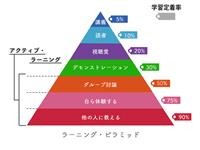CHAPTER 11 HETEROSKEDASTICITY 1
Chapter 11 Heteroskedasticity
11.1 White’s test for heteroskedasticity
Foramodelwithheteroskedasticity,
yi = Xprimeiβ + εi,
wehave
E (b) = β and V ar(b) = (XprimeX)?1 Xprime?X (XprimeX)?1
where
? = diagbracketleftbigσ21,··· ,σ2nbracketrightbig.
Wemayexpress
Xprime?X =
nsummationdisplay
i=1
σ2ixixprimei.
Supposethat
n?1XprimeX = n?1
summationdisplay
xixprimei → Q,
afiniteandnonsingularmatrix. Then
n?1Xprime?X = n?1
summationdisplay
σ2ixixprimei
canbeestimatedconsistentlyby
?Vn = n?1
nsummationdisplay
i=1
e2ixixprimei
where
ei = yi ?xprimeib.
(Notethat b p→ β eveninthepresenceofheteroskedasticity.)
Ifthereisnoheteroskedasticity (σ21 = ··· = σ2n), n?1Xprime?X isconsistentlyestimated
eitherby?σ2 (n?1XprimeX)where?σ2 = n?1 (y ?Xprimeb)(y ?Xprimeb)as ?Vn.Thus,comparing ?Vn and
σ2 (n?1XprimeX) providesanindicatorofheteroskedasticity. Whenthereisnoheteroskedas-
ticity, ?Vn ?σ2 (n?1XprimeX) p→ 0. Otherwise, ?Vn ?σ2 (n?1XprimeX) pnotarrowright0.
CHAPTER 11 HETEROSKEDASTICITY 2
The test statistic White suggests is
WH =nDparenleftbigb,?σ2parenrightbig ?B?1Dparenleftbigb,?σ2parenrightbig,
where
Dparenleftbigb,?σ2parenrightbig = n?1
summationdisplay
Ψprimeiparenleftbige2i ? ?σ2parenrightbig
?B = n?1summationdisplayparenleftbige2i ? ?σ2parenrightbigparenleftBigΨi ? ?ΨparenrightBigprimeparenleftBigΨi ? ?ΨparenrightBig
Ψi is the 1 ×K(K+ 1)/2 vector containing the element of the lower triangle of the
matrixxixprimei,
?Ψ =n?1
nsummationdisplay
i=1
Ψi
Under the null of no heteroskedasticity,
WH d→χ2K(K+1)/2
(K : no of regressors).
Remark 1 Note that Dparenleftbigb,?σ2parenrightbig is the vectorized form of ?V ? ?σ2 (n?1XprimeX).
Remark 2 The limiting distribution ofWH depends on the number of regressors in the
model.
11.2 Lagrange multiplier test for heteroskedasticity
Breusch and Pagan (1979) “A Simple Test for Heteroskedasticity and Random Coefficient
Variation.” Econometrica
yt =Xprimetβ+εt
εt ~iidNparenleftbig0,σ2tparenrightbig
σ2t =h(Zprimetα) (the first element ofZt is one)
H0 :α2 = ··· =αp = 0 (no heteroskedasticity)
TheLM test is
LM = 12
parenleftBigsummationdisplay
Ztft
parenrightBigprimeparenleftBigsummationdisplay
ZtZprimet
parenrightBig?1parenleftBigsummationdisplay
Ztft
parenrightBig
CHAPTER 11 HETEROSKEDASTICITY 3
where
ft = e
2
?σ2 ?1.
eand ?σ2 are obtained by OLS. Asn→∞,
LM d→χ2p?1.
Remark 1 The LM test is independent of the functional formh(·).
Remark 2 We need to specify exogenous variableZt to apply the LM test.
11.3 GLS
Suppose thatVar(εi|Xi) =σ2i. The GLS estimator is obtained by regressing
Py=
?
?? y1/
√σ
1.
..
yn/√σn
?
?? onPx=
?
?? x1/
√σ
1.
..
xn/√σn
?
??
This gives the GLS estimator
?βGLS =
bracketleftBigg nsummationdisplay
i=1
parenleftbigg 1
σ2i
parenrightbigg
xixprimei
bracketrightBigg?1bracketleftBigg nsummationdisplay
i=1
parenleftbigg 1
σ2i
parenrightbigg
xiyi
bracketrightBigg
.
Ifσ2i =xprimeiα,we may write
ε2i =σ2i +νi
where
νi =ε2i ?Eparenleftbigε2i|xiparenrightbig.
Replacingε2i withe2i,we have an approximate relation
e2i =xprimeiα+ν?i.
Running OLS on this equation, we can obtain ?αand ?σi =xprimei?α.The feasible GLS estimator
is obtained plugging ?σi into the formula of GLS.
We may use other models for heteroskedasticity. Examples are:
σ2i = (xprimeiα)2
σ2i = exp(xprimeiα)
...
CHAPTER 11 HETEROSKEDASTICITY 4
11.4 Autoregressive conditional heteroskedasticity (ARCH)
Consider
yt = βprimeXt +εt
εt = ut
radicalBig
α0 +α1ε2t?1, ut ~ iidN (0,1)
This is the ARCH (1) model.
Since
E (εt|εt?1) =
radicalBig
α0 +α1ε2t?1E(ut) = 0,
Var(εt|εt?1) = Eparenleftbigε2t|εt?1parenrightbig = parenleftbigα0 + α1ε2t?1parenrightbigE (ut)2
= α0 +α1ε2t?1
Thus, εt is conditionally heteroskedastic with respect to εt?1.
The unconditional variance of εt is
Var(εt) = EparenleftbigEparenleftbigε2t|εt?1parenrightbigparenrightbig = α0 +α1Eparenleftbigε2t?1parenrightbig
= α0 +α1Var(εt?1).
If the unconditional variance does not change over time,
Var(εt) = Var(εt?1) = α01?α
1
, |α| < 1.
Thus, the model obeys the condition of the classical linear regression model.
Various generalizationof theARCH (1) model is available in the literature: ARCH (p),
GARCH (1,1), etc.
| 课件名称: | 香港大学:计量经济学(英文版) |
| 课件分类: | 经济 |
| 课件类型: | 教学课件 |
| 文件大小: | 1.17MB |
| 下载次数: | 11 |
| 评论次数: | 6 |
| 用户评分: | 7.7 |
- 1. 香港大学:计量经济学(英文版):chapter1
- 2. 香港大学:计量经济学(英文版):chapter10
- 3. 香港大学:计量经济学(英文版):chapter11
- 4. 香港大学:计量经济学(英文版):chapter12
- 5. 香港大学:计量经济学(英文版):chapter2
- 6. 香港大学:计量经济学(英文版):chapter3
- 7. 香港大学:计量经济学(英文版):chapter3_1
- 8. 香港大学:计量经济学(英文版):chapter4
- 9. 香港大学:计量经济学(英文版):chapter5
- 10. 香港大学:计量经济学(英文版):chapter6
- 11. 香港大学:计量经济学(英文版):chapter7
- 12. 香港大学:计量经济学(英文版):mid_rev



